Great Danes, often referred to as gentle giants, are among the largest dog breeds in the world. Their majestic size and friendly nature make them a favorite among many dog enthusiasts. However, with their large size comes a large appetite. Feeding a Great Dane properly is crucial to ensure they receive the right amount of nutrition to support their rapid growth and maintain their overall health.
1. Understanding a Great Dane’s Nutritional Needs
Great Danes have specific dietary requirements, especially during their growing phase. Their growth rate is astonishingly fast, which means their diet needs to provide the right balance of proteins, fats, and essential nutrients. An improper diet can lead to health issues such as hip dysplasia, osteochondrosis, and other bone-related diseases.
2. Feeding Guidelines Based on Age
a) Puppies (8 weeks to 5 months): At this age, Great Dane puppies have an enormous growth rate. Feed them 3-6 cups of food divided into three meals per day.
b) Adolescents (5 months to 2 years): Their growth slows down a bit but still requires significant nutrition. You should feed them 6-10 cups of food split between two meals daily.
c) Adults (2 years and above): An adult Great Dane’s metabolism stabilizes, and they require 7-10 cups of food daily, split into two meals.
3. Reading the Label for Caloric Content
Different dog foods contain various calorie counts. It’s essential to read the label and adjust the food amount based on the calories provided. Generally, high-quality dog food will have around 350-450 calories per cup. But always refer to the label to get precise information.
4. Potential Health Issues from Overfeeding or Underfeeding
Overfeeding can lead to obesity, which is a serious concern for large breeds as it puts extra strain on their joints and heart. Underfeeding, on the other hand, can lead to malnutrition and development problems. Both scenarios can significantly reduce a Great Dane’s lifespan.
5. Special Dietary Requirements
Great Danes sometimes require specialized diets, especially if they suffer from allergies or specific health concerns. Foods with fish oils can help support joint health, and grain-free options might be suitable for those with sensitivities.
6. Treats and Extras
While it’s tempting to spoil these gentle giants with treats and table scraps, remember that these extras add up in calories. Always account for these when determining their daily caloric intake.
7. Cost of Feeding a Great Dane
Given their size, feeding a Great Dane can be relatively expensive. Assuming a 30lb bag of high-quality dog food costs around $50 and you feed about 8 cups a day, a bag might last around 15 days. This means you would spend approximately $100 per month. Remember, this is just an estimate, and prices can vary based on brand, location, and specific dietary requirements.
8. Importance of Fresh Water
Always ensure that your Great Dane has access to fresh and clean water. Large breeds can get dehydrated quickly, especially in warmer climates.
9. Regularly Consulting with a Veterinarian
Always keep in touch with your veterinarian about your Great Dane’s dietary needs. Regular check-ups can help ensure they’re growing at the right pace and receiving the nutrients they require.
10. Adjustments for Active vs. Less Active Danes
Just like humans, the more active your dog is, the more calories they’ll burn. If you have a particularly active Great Dane, they might require more food. Conversely, older or less active Danes might need slightly less.
Our 5 Top Foods for Great Danes
The diets were selected by our founder Justin Palmer, a certified canine nutrition expert, specifically with Great Danes in mind:
| Food | Pros | Cons |
|---|---|---|
|
|
|
|
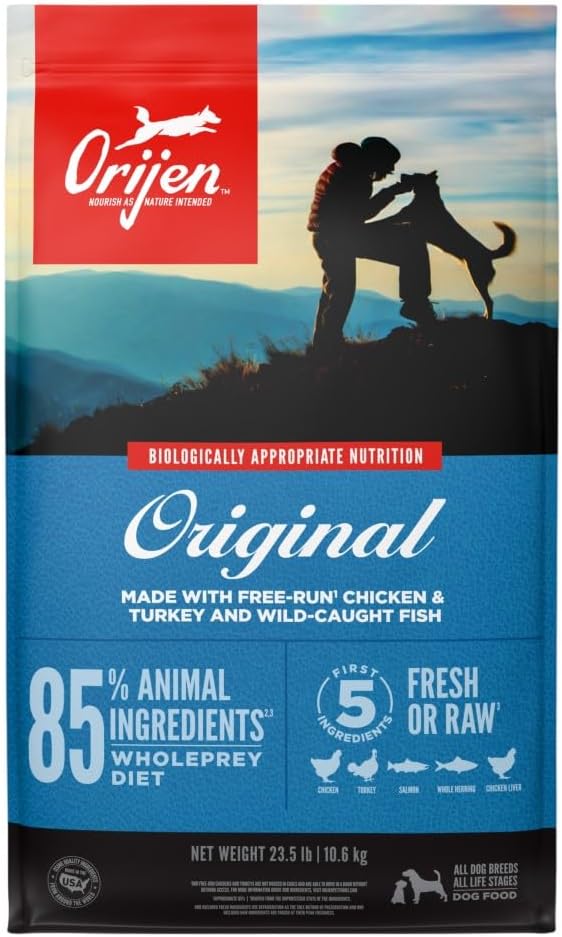
Check Today's Price on: |
|
|
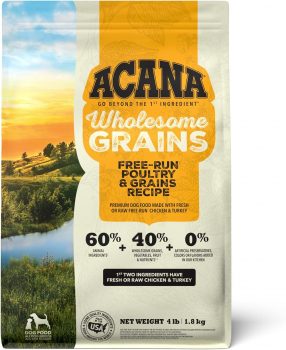
Check Today's Price on: |
|
|
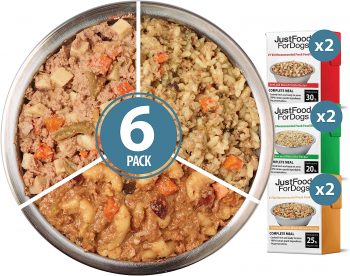
Check Today's Price on: |
|
|
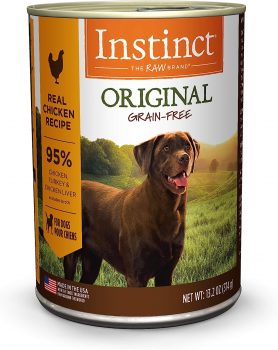
Check Today's Price on: |
|
|
Conclusion
While feeding a Great Dane might seem daunting given its size, with the right knowledge and regular vet consultations, it becomes manageable. Providing them with the proper nutrition ensures they live a long, healthy, and happy life.
Frequently Asked Questions About Feeding a Great Dane
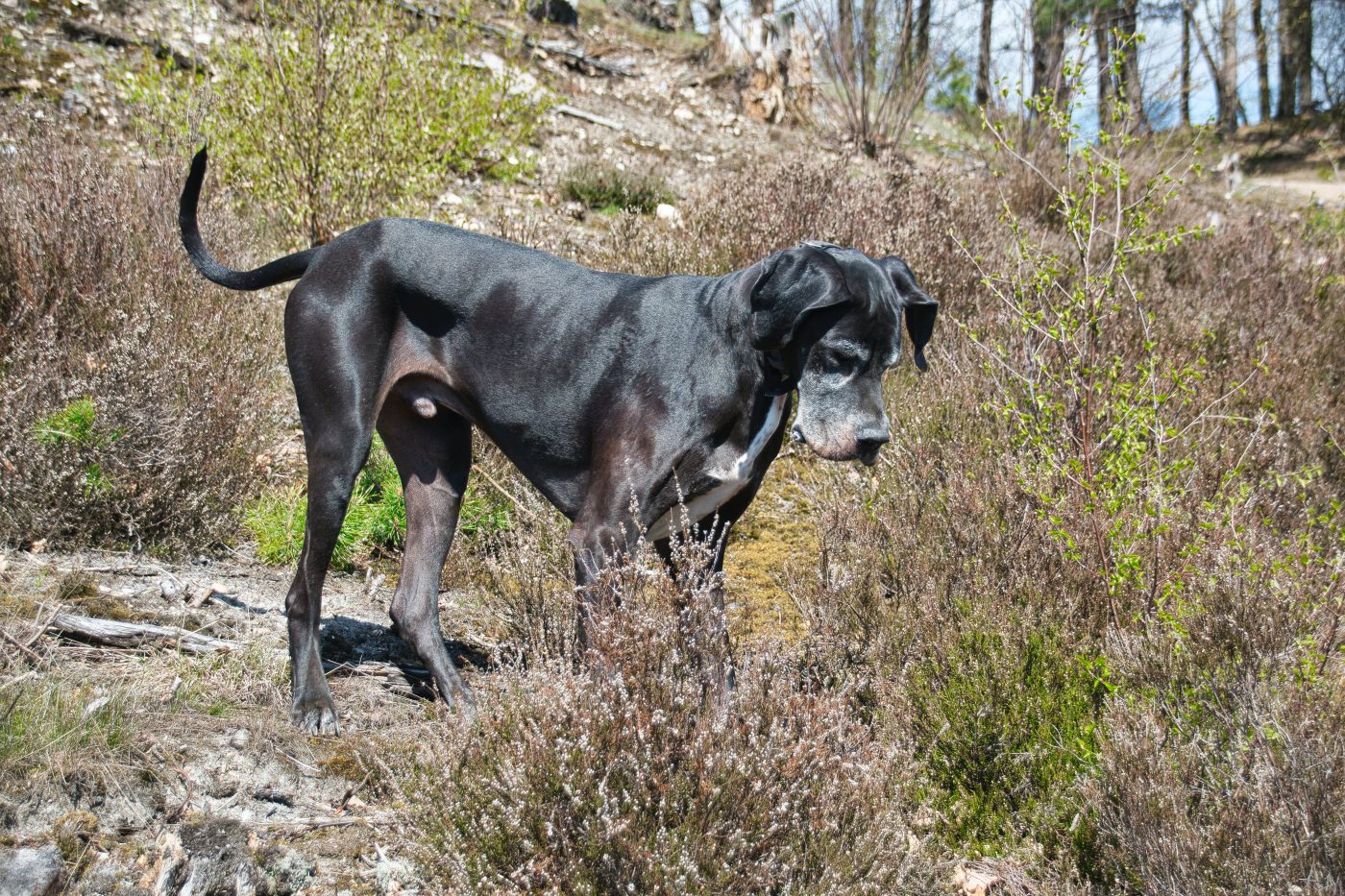
1. How often should I feed my Great Dane puppy?
Great Dane puppies, especially between the ages of 8 weeks to 5 months, require frequent meals due to their rapid growth. It’s recommended to feed them three times a day. As they grow older, you can gradually reduce this to two meals a day by the time they’re adolescents.
2. Are there specific dog food brands recommended for Great Danes?
While there isn’t one universally recommended brand, it’s essential to choose high-quality dog food formulated for large breeds. These foods often have the necessary nutrients to support a Great Dane’s growth and overall health. Consulting with your veterinarian can provide brand-specific recommendations.
3. How can I determine the caloric content of my dog food?
The caloric content is typically mentioned on the dog food label. Make sure to check the ‘per cup’ or ‘per serving’ caloric value to adjust feeding amounts accordingly. Remember, different brands and formulas can have varying calorie counts.
4. What health risks are associated with overfeeding my Great Dane?
Overfeeding can lead to obesity, which puts extra strain on a Great Dane’s joints and heart. Obesity can also lead to other complications like diabetes, and reduced stamina, and can significantly shorten their lifespan. It’s crucial to monitor their weight and adjust feeding amounts as needed.
5. Can I feed my Great Dane human food or table scraps?
While occasional treats are okay, regularly feeding them human food or table scraps is not recommended. Many human foods can be harmful to dogs, and others can disrupt their balanced diet. Always ensure any human food given is safe for canine consumption.
6. How much water should a Great Dane drink daily?
Great Danes should always have access to fresh and clean water. While there isn’t a fixed amount, a general guideline is that dogs should drink an ounce of water per pound of their body weight daily. For Great Danes, this can be around 100 ounces or more, but it varies based on activity level, age, and climate.
7. Are grain-free diets suitable for Great Danes?
Grain-free diets can be beneficial for Great Danes, especially if they have grain allergies or sensitivities. However, it’s essential to ensure that the grain-free diet still provides all the necessary nutrients. Always consult with your vet before making significant changes to your dog’s diet.
8. How do I know if my Great Dane is underweight or overweight?
You should be able to feel, but not necessarily see, your Great Dane’s ribs without pressing hard. If the ribs are visible, they might be underweight. If you can’t feel the ribs at all, they might be overweight. Regular vet check-ups can also provide insights into their weight and overall health.
9. Do Great Danes have specific dietary concerns as they age?
Yes, as Great Danes age, their metabolism slows down, and they might require fewer calories. Senior Great Danes may also benefit from foods that support joint health and have anti-inflammatory properties. It’s crucial to adjust their diet based on age and any emerging health issues.
10. Can I give my Great Dane supplements?
While some supplements can benefit Great Danes, especially those for joint health, it’s essential to consult with a veterinarian before adding any to their diet. Unnecessary or excessive supplementation can harm more than help. Always ensure the supplements are suitable for large breed dogs.
 Check Today's Price on:
Check Today's Price on: Toledo, United States.
Toledo, United States.